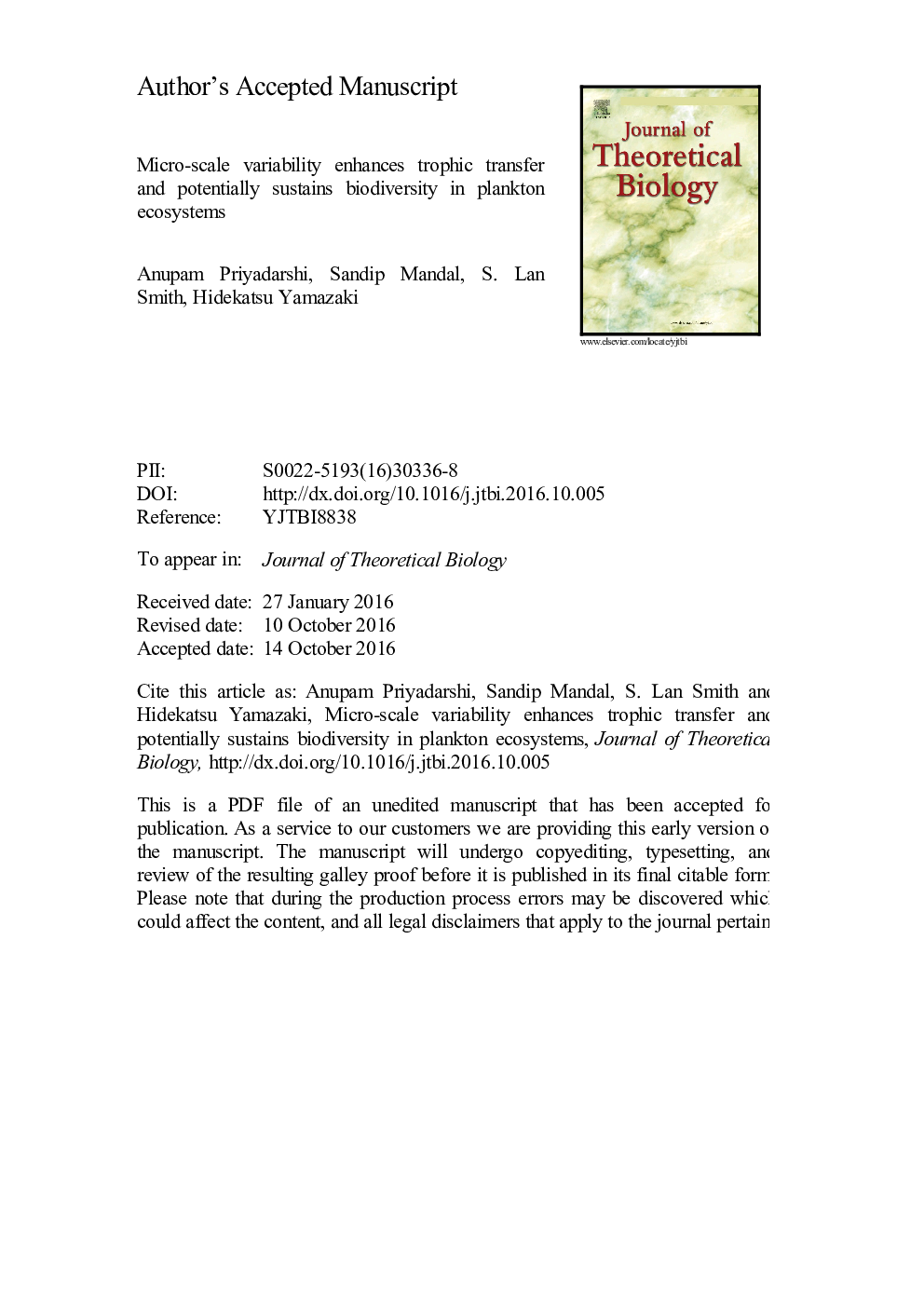| Article ID | Journal | Published Year | Pages | File Type |
|---|---|---|---|---|
| 6368802 | Journal of Theoretical Biology | 2017 | 29 Pages |
Abstract
We develop moment closure approximations to represent micro-scale spatial variability in the concentrations of nutrients (N), phytoplankton (P) and zooplankton (Z) in an NPZ model, which we apply to examine the impact of different levels of micro-scale variability on both ecosystem dynamics and trophic transfer. Accounting explicitly for both the mean-field and fluctuating components of each prognostic variable in the NPZ model yields different dynamics for the mean-field concentrations, as well as lower phytoplankton biomass and greater zooplankton biomass, compared to the conventional NPZ model without micro-scale variability. The biomass of zooplankton consistently increases with increasing total micro-scale variability, and a minimum threshold of such variability is required for the existence of stable steady state solutions in the NPZ closure model. Compared to the conventional NPZ model, the domain of parameter space over which stable solutions exist is larger than for the NPZ closure model, and this stable domain widens with increasing total variability. The latter result suggests that natural systems with greater micro-scale variability may have the potential to sustain greater biodiversity. We find that with the NPZ closure model: (1) the stability domains increases with micro-scale variability, (2) increase of the level of total micro-scale variability enhances trophic transfer, i.e. increases the biomass of zooplankton, and (3) the coefficient of variation (CVP) of phytoplankton increases with micro-scale variability.
Related Topics
Life Sciences
Agricultural and Biological Sciences
Agricultural and Biological Sciences (General)
Authors
Anupam Priyadarshi, Sandip Mandal, S. Lan Smith, Hidekatsu Yamazaki,
